

| Discrete Dynamics Lab |
The spiral glider-gun rule, v=3 k=7
Further details and results relating to the paper:
Wuensche,A., A.Adamatzky, (2006),
"On spiral glider-guns in hexagonal
cellular automata: activator-inhibitor paradigm"
to appear in International Journal of Modern Physics C (preprint online
here)
Fundamental structures in the spiral rule,
which can be interpreted as a reaction-diffusion system (activator,
inhibitor and substrate).
Note also that the dynamics are symmetric — all phenomena can occur
equally in any direction, or clockwise and anti-clockwise.
|
|  5 basic types of mobile gliders (G1-G5), all travelling NorthEast, in the direction of their "active" red heads.
|  2 types of static "eaters" (E1, E2), E2 has "memory" on its outer shell
| 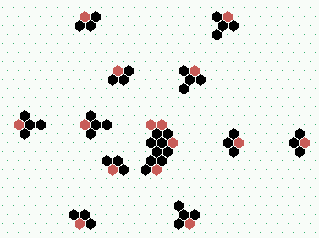 S1: high-frequency spiral glider-gun shooting G1 gliders, frequency=6
| 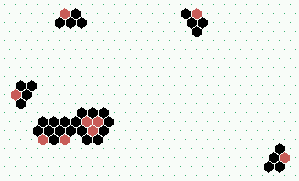 S2: low-frequency spiral glider-gun shooting G2 gliders, frequency=21 | ||
S1 and S2 spiral glider-guns, 120x120, click to enlarge
|
|  S1: high-frequency spiral glider-gun
|  S2 low-frequency spiral glider-gun
| 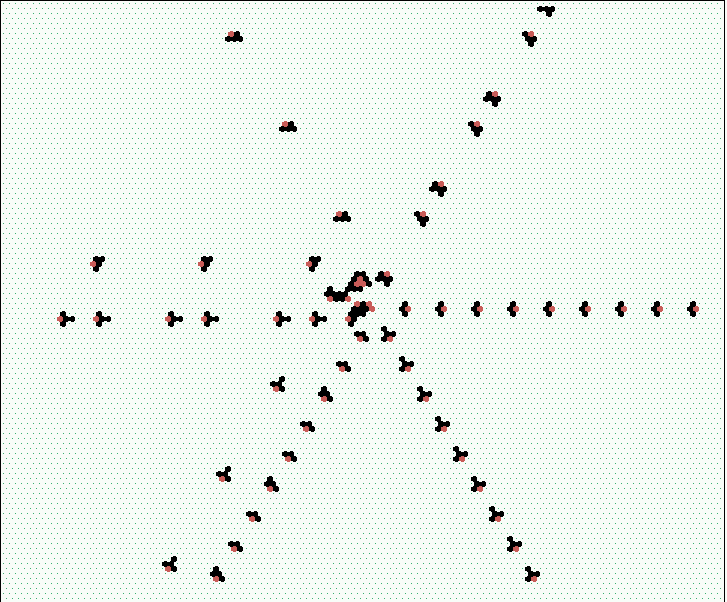 high and low-frequency spiral glider-guns interacting | ||
Snapshots of evolved systems,
with gliders, glider-guns and eaters, forming quasi-stable circuits,
click to enlarge.
|
| 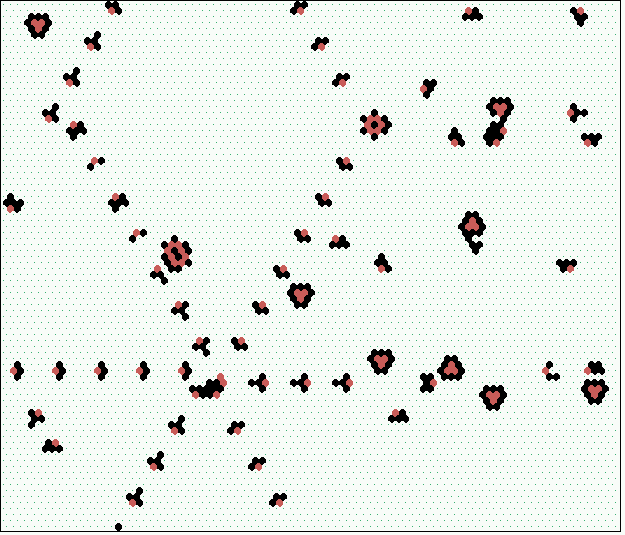 snapshot 88x88
| 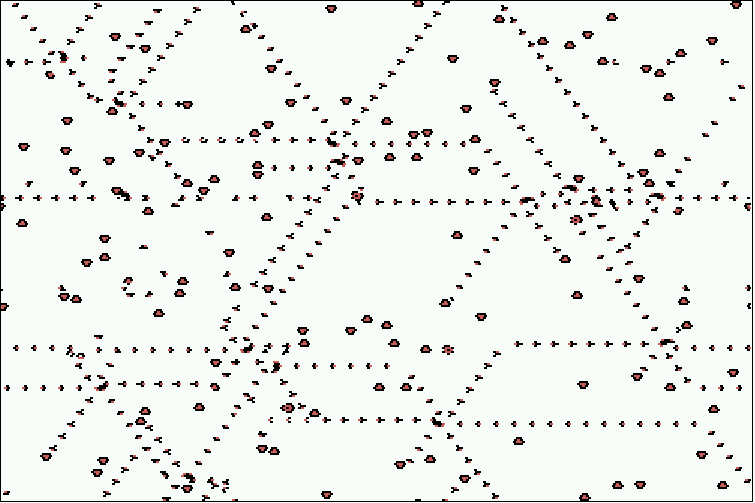 snapshot 250x250 | |
| Pairwise collisions between basic gliders - some examples |
Mutual annihilation 2→0
| 3 | steps | 
| 
| 
3 | steps | 
| 
| 
| |||
Conservation + Destruction 2→1
| 2 | steps | 
| 
| 
2 | steps | 
| 
| 
| |||
One glider bouncing off another 2→2
| 180° bounce | 6 steps | 
| 
| 
| 
| 
| 
| 
| |||
| 120° bounce 7 steps | 
| 
| 
| 
| 
| 
| 
| 
|
Reproduction
| 2→4 | 6 steps | 
| 
| 
| 
| 
| 
| 
| |||
| 2→6 10 steps | 
| 
| 
| 
| 
| 
| 
| 
| 
| 
| 
|
| 2→8 13 steps | 
| 
| 
| 
| 
| 
| 
| 
| 
| 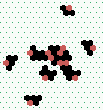
| 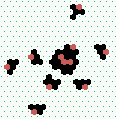
| 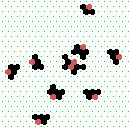
| 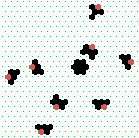
| 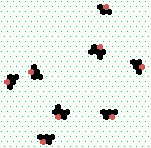
|
| 2→6 15 steps | 
| 
| 
| 
| 
| 
| 
| 
| 
| 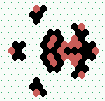
| 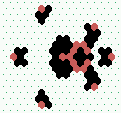
| 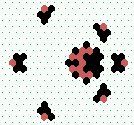
| 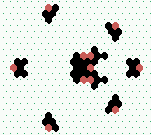
| 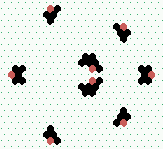
| 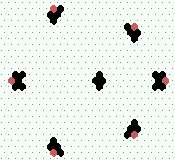
|
Creating eater E1
| eater | E1 + 4 gliders 10 steps | 
| 
| 
| 
| 
| 
| 
| 
| 
| 
| 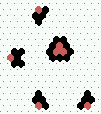
| |||
| Memory - Glider interacting with eater E2 | ||||||
| Write | 
| 
| 
| 
| 
| 
|
| Read | 
| 
| 
| 
| 
|
| Creating spiral-glider guns S1 and S2 |
S1 spiral glider-gun | 
| 
| 
| 
| 
| 
| 
| 
| 
| 
| 
| 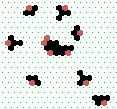
| 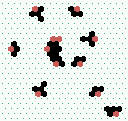
| |||||||
|
S1 spiral glider-gun | 
| 
| 
| 
| 
| 
| 
| 
| 
| 
| 
| 
| 
| 
| 
| 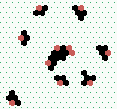
|
|
S2 spiral glider-gun | 
| 
| 
| 
| 
| 
| 
| 
| 
| 
| 
| 
| 
| 
| 
| 
| 
| 
| 
| 
|
| mobile gliders-guns, some examples, with heading (moving head direction) indicated | ||||||||||||
heading NE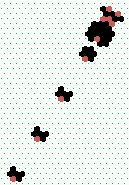
| heading NE
| heading NE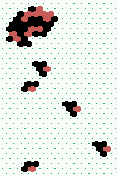
| heading NE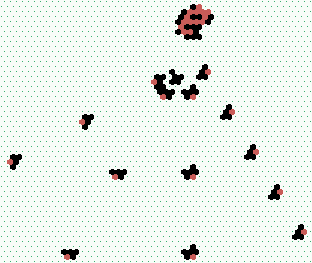
back to the DDLab home page April 2006 -- Last modified: June 2009 | |||||||||